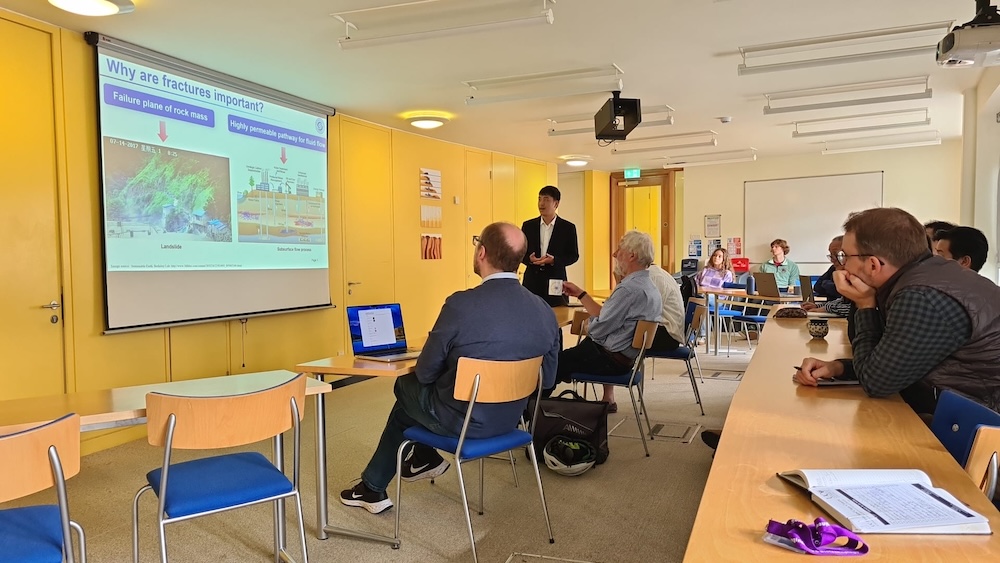Just before the beginning of term, professor Weiwei Zhu from the Institute of Geology and Geophysics of the Chinese Academy of Sciences visited us and presented his recent work on Fracture Network connectivity in geological formations.
Fractures are ubiquitous in crustal rocks due to the harsh environment of the deep subsurface and the inherent brittleness of the rock. The fractures, which represent planes of rock failure, significantly influence rock stability and are pivotal in predicting geohazards. Additionally, fractures typically provide highly permeable pathways for fluid flow in the subsurface, making them crucial for subsurface hydrogen storage as well as geological CO2 sequestration.
Professor Zhu has been working to develop a discrete modelling software, which investigates the properties of single and multiple fracture clusters, with the aim of quantifying the connectivity of complex fracture networks. He has been using a DEM -LBM method to simulate fracturing processes and investigate the evolution of fracture networks under stress disturbances. You can read more about professor Zhu’s work here.
